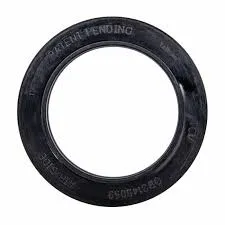7 月 . 27, 2024 03:29 Back to list
Choosing the Right 20x35x7mm Oil Seal for Your Mechanical Applications and Maintenance Needs
Understanding the 20x35x7 Oil Seal A Comprehensive Overview
Oil seals are critical components used in various mechanical systems to prevent the leakage of fluids while keeping contaminants out. Among the many kinds of oil seals available, the 20x35x7 oil seal is a popular choice due to its specific dimensions and versatile applications.
What is an Oil Seal?
An oil seal, also known as a radial seal or oil retainer, is designed to retain lubricating fluids, such as oil or grease, within a component while also keeping dust, dirt, and other contaminants at bay. Made from flexible materials like rubber, these seals are critical in ensuring the smooth and efficient operation of machinery and engines.
Dimensions Explained
The designation 20x35x7 refers to the oil seal’s dimensions - 20 mm This is the inner diameter of the seal, indicating the size of the shaft it fits onto. - 35 mm The outer diameter, which reflects the overall size of the seal. - 7 mm The thickness of the seal, which determines how far it will protrude from the housing.
These measurements indicate that the seal is suited for sealing components that have a shaft diameter of 20 mm and a housing with a corresponding outer diameter of 35 mm.
Material and Design
Most oil seals are made from elastomers, which are flexible polymers that provide a reliable and effective seal. Common materials include nitrile rubber (NBR), fluorocarbon rubber (FKM), and silicone rubber, each chosen for their specific resistance to temperatures and various fluids. The selection of material is vital as it directly impacts the seal's performance and longevity.
The design of the oil seal typically features a sealing lip that makes contact with the shaft. This lip can be designed with various geometries to optimize sealing performance. In many cases, a spring is included within the seal to keep the lip pressed against the shaft, ensuring less wear and longer service life.
20x35x7 oil seal

Applications of 20x35x7 Oil Seal
The 20x35x7 oil seal can be found in numerous industrial and automotive applications. Here are a few areas where this specific oil seal is commonly used
1. Automotive Industry In vehicles, these seals are often found in the engine, transmission, and other components to prevent oil leaks, which can lead to severe mechanical failures if not appropriately managed.
2. Industrial Machinery Equipment such as pumps, motors, and gearboxes frequently utilize oil seals to maintain lubrication and protect against contamination, extending the life of critical machinery components.
3. Agricultural Equipment Tractors and other farming machinery often employ oil seals designed to withstand harsh environmental conditions while protecting vital components from oil leaks.
4. Home Appliances Many appliances, including washing machines and refrigerators, also utilize oil seals to ensure smooth operation and energy efficiency.
Maintenance and Replacement
Regular maintenance is essential to ensure the effectiveness of oil seals. Signs of wear, such as oil leaks or unusual noise from equipment, may indicate that the oil seal needs replacement. Choosing the correct size, such as the 20x35x7 oil seal, is crucial for ensuring a proper fit and optimal performance.
Conclusion
The 20x35x7 oil seal is a small but vital component in many mechanical assemblies. Its specific dimensions and material selection play an essential role in maintaining the efficiency and longevity of various devices. Understanding its properties and applications can help users make informed decisions about maintenance and replacements, ultimately leading to enhanced performance and reliability in mechanical systems.